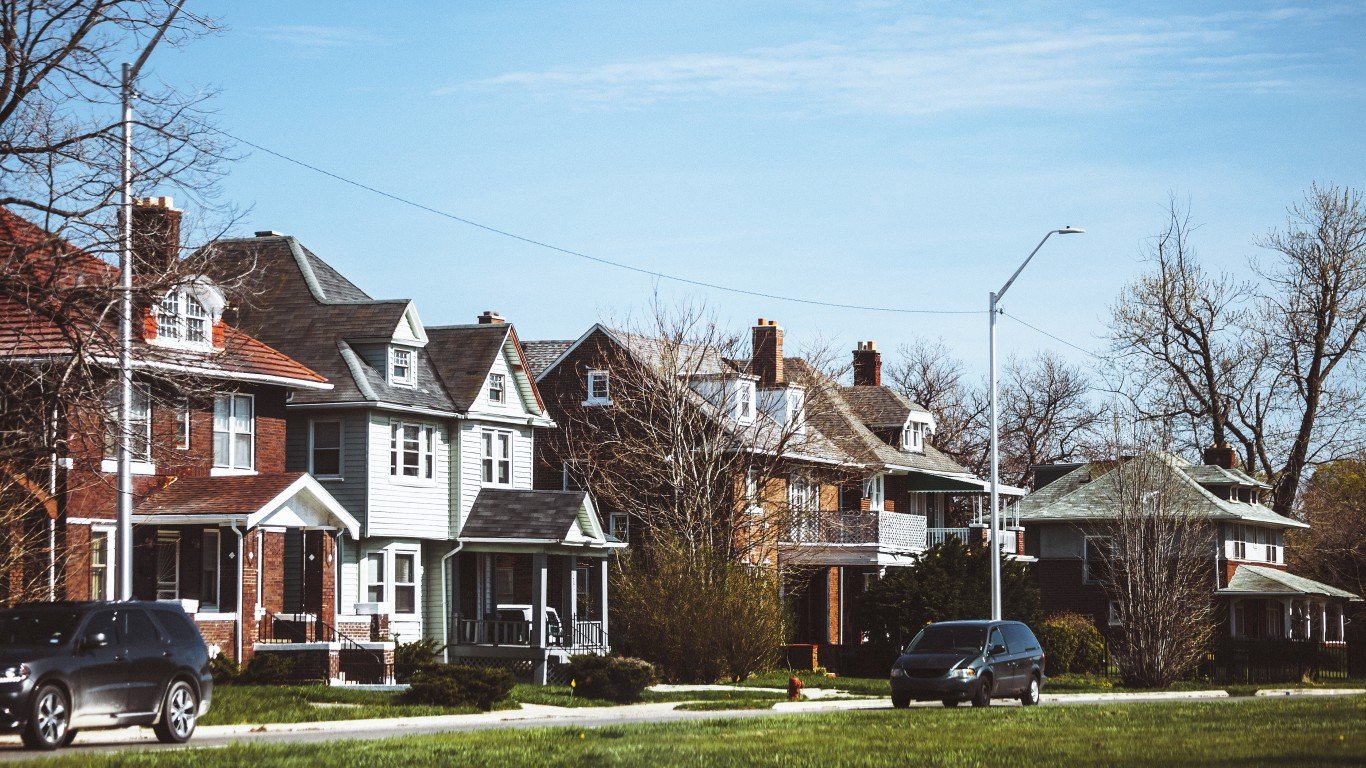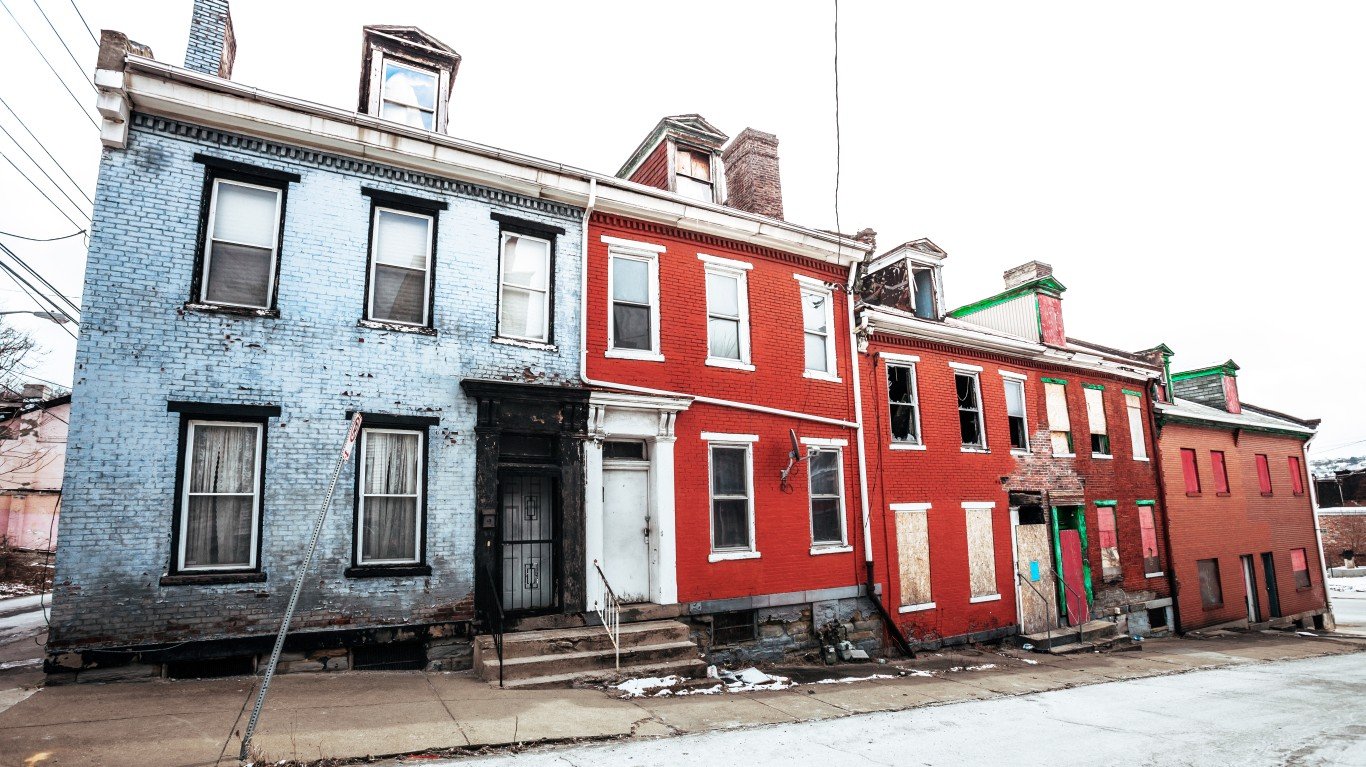In the past 12 months, home prices have skyrocketed in some major U.S. cities. In Phoenix, according to real estate information site Trulia, asking home prices increased by 26.9% between November 2011 and November 2012. Of course, that’s after home prices in the area plummeted by more than 50% peak-to-trough. A new report released by Trulia points out that just because home values are rising rapidly in certain area doesn’t mean these market are healthy. Source: Thinkstock
Source: Thinkstock
Click here to see: The Best Housing Markets for 2013
Trulia’s latest report, “2013’s Top 10 Healthiest Housing Markets,” reviews the largest housing markets in the country based on what Trulia identifies as the three fundamental characteristics of a healthy housing market: strong job growth; low, but manageable, vacancy rates; and low foreclosure inventory. These are the 10 best housing markets for 2013.
In an interview with 24/7 Wall St., Trulia’s Chief Economist Jed Kolko explained that while housing markets have increased in the last year, many of the increases are rebounds following big declines in home values. As a result, “markets with the biggest price increases are some of the boom and bust markets,” including Phoenix, Las Vegas, Miami and Detroit. Housing prices in these places increased significantly, year over year.
Employment growth is also an important measure for housing demand. “When people have jobs, they are able to spend more on renting or buying, and they are more likely to buy,” Kolko said. The 10 metro areas projected to be the healthiest in 2013 have among the highest job growth in the U.S. All 10 are within the top 20% for job growth, primarily benefiting from vibrant technology and energy sectors. In Houston, one of best housing markets for 2013, employment grew by 3.6% between October 2011 and October 2012 — the largest job growth of any major metro region.
Having low vacancy rates is also important to the long-term health of these markets. “High vacancy rates hold back price increases, they hold back construction, they hold back the recovery,” Kolko explained. A lower vacancy rate, while better for the health of the market, should not be too low, as extremely low vacancy constricts availability and drives up prices too much. All 10 of these markets have a vacancy rate below the average of 3.4% among the 100 largest metropolitan areas, but only two are among the 10 with the lowest rates.
Finally, these places have low foreclosure inventory. Places with low foreclosure inventory had less severe declines during the recession. Of the 10 healthiest housing markets for 2013, few had severe declines, peak-to-trough, in home value. Because of this, there are fewer homes on the market that had been foreclosed. In these cities, rising home prices can be more fairly said to be the result of a growing market rather than the result of depressed prices due to the market being flooded with foreclosed homes. Bethesda, one of the metro areas on this list, had a foreclosure inventory of just 2.7 per 1,000 units, the fourth-smallest proportion in the country.
24/7 Wall St. reviewed the ten housing markets identified in Trulia’s “2013’s Top 10 Healthiest Housing Markets.” To make this list, these markets needed to have high job growth, low vacancy rates, and low foreclosure inventory. Job growth was calculated over 12 months through October. Vacancy rate, provided by RealtyTrac, is for November, and foreclosures per 1,000 units is for October. In addition to these data, Trulia also provided year-over-year change in home prices through November, year-over-year change in asking price through November, year-to-date construction permits per 1,000 units through October and the peak-to-trough decline in home prices during the recession.
These are the 10 Best Housing Markets for 2013.
10. Louisville, Ky.-Ind.
> Job growth: 2.7%
> Vacancy rate: 3.0%
> Construction permits: 5.8 per 1,000 homes
Employment growth is the main reason behind the optimism for the Louisville housing market. Jobs in the area grew by 2.7% in the first 10 months of the year, which is among the top growth rates of the 100 largest housing markets. There has been a disproportionately strong growth in manufacturing, especially for automobiles. The Louisville housing market fared better than most during the economic downturn, with prices falling just 4.7% from peak to trough. Despite this, construction has still been relatively slow, at just 51% of the area’s historical normal rate in the first eight months of 2012.
9. Fort Worth, Tex.
> Job growth: 2.6%
> Vacancy rate: 3.0%
> Construction permits: 8.1 per 1,000 homes
The housing market in the Fort Worth area has improved in 2012. Jobs in the mining, logging and construction sector grew by 9.4% from October 2011 to October 2012. Meanwhile, jobs in both the education and health services and professional services, the two largest nongovernment sectors, grew by 5.7%. Houses in the Fort Worth are generally cheap compared to most large metro areas. The median asking price per square foot from November 2011 to November 2012 was just $77.70, which was the 10th lowest among the 100 largest housing markets. Nearby Dallas had a median asking price of $89.72 per square foot, while Austin, about a three-hour drive away, had a median asking price of $107.35.
Also Read: American Cities Adding (or Losing) the Most Jobs
8. Peabody, Mass.
> Job growth: 2.5%
> Vacancy rate: 2.4%
> Construction permits: 2.5 per 1,000 homes
The median asking price per square foot for homes in the Peabody area was $189.47 for the 12 months through November. While this was more than most major home markets, it was much less than in Boston itself, where the median asking price per square foot was more than $220. Unlike many of next year’s top markets, construction remained slow in Peabody. There were just 2.5 construction permits per 1,000 units between January and October, fewer than most markets. According to Trulia’s Kolko, in Peabody, “[they are] more reliant on higher end professional services and haven’t been held back by a lot of manufacturing. [They] had very little overbuilding during the bubble.” Last month, the Boston Globe reported that year-to-date single family home sales through October for the Commonwealth of Massachusetts were up almost 22% from the year before.
7. Omaha, Neb.-Iowa
> Job growth: 2.5%
> Vacancy rate: 3.3%
> Construction permits: 8.7 per 1,000 homes
Omaha’s housing market weathered the storm better than most housing markets, as home prices only fell by 4.3% from peak-to-trough. The economy of Omaha has been particularly strong. As of October 2012, the unemployment rate in the Omaha metro area was just 3.9%, about half that of the national unemployment rate that month. Job growth in the first 10 months of the year was at 2.5%, which was among the top quintile of all metro areas. The median asking price per square foot in the first eight months of 2012 was a modest $79.96, which was the 14th lowest out of 100 metro areas.
6. Seattle, Wash.
> Job growth: 3.1%
> Vacancy rate:2.4%
> Construction permits: 11.1 per 1,000 homes
In the last year, asking prices on homes in Seattle rose by 8.8%, more than most of the nation’s largest housing markets. This increase coincided with high levels of construction — there were 11.1 construction permits per 1,000 units, more than all but a few markets nationwide. Despite this growth in demand, Seattle remained affordable relative to areas such as San Francisco and San Jose where the median price per square foot was more than twice as high as that in Seattle. None of next year’s top markets had home prices fall as much during the recession as Seattle, where prices fell by nearly 26% from their peak-to-trough.
5. Austin, Tex.
> Job growth: 3.5%
> Vacancy rate: 1.2%
> Construction permits: 21.5 per 1,000 homes
The Austin metropolitan area has benefited from a combination of job growth and declining vacancy rates.The 3.5% job growth in the first 10 months of 2012 was the third largest of all metro areas driven by a surge in job growth in sectors such as technology, education, healthcare and construction. Meanwhile, the 1.2% vacancy rate was the third-lowest of all metropolitan areas. Construction levels were at 120% of local historical normal levels in the first eight months of 2012, while there were 21.5 construction permits per 1,000 residents in the first 10 months. Both figures were better than any of the 100 largest housing markets.
4. San Antonio, Texas
> Job growth: 2.7%
> Vacancy rate: 2.8%
> Construction permits: 8.5 per 1,000 homes
San Antonio is one of four top housing markets for 2013 located in Texas. Through November, the median asking price per square foot in the area was just $88.44, less than nearly two-thirds of the nation’s largest real estate markets. Also, as of November, asking prices in the area had risen just 0.8% from the year before, less than any other top market for 2013. But like other areas in Texas, including Austin, Fort Worth and Houston, San Antonio is building rapidly. For the first 10 months of 2012, there were 8.5 construction permits per 1,000 units in the metro area, faster than all but 14 other areas in the United States. The region also was relatively unaffected by the housing crisis, as home prices fell by 3.2% from peak-to-trough.
Also Read: The World’s Most and Least Livable Cities
3. Bethesda-Rockville-Frederick, Md.
> Job growth: 2.8%
> Vacancy rate: 1.2%
> Construction permits: 6.7 per 1,000 homes
The 2.8% job growth in the first 10 months of 2012 was one of the highest rates in the United States. Area home prices have been pushed upwards by limited supply: the Bethesda-Rockville-Frederick area had one of the nation’s lowest vacancy rates, at 1.2% in November, as well as one of its lowest foreclosure inventories, at just 2.7 homes per 1,000 units during October. Through November, the asking price per square foot for homes in the area was lower than only 14 other metro areas. Over the last year, asking prices have risen just 5.5% and median price per square foot was $169.15, slightly higher than Washington, D.C.
2. San Francisco, Calif.
> Job growth: 3.4%
> Vacancy rate: 1.7%
> Construction permits: 4.6 per 1,000 homes
The big thing going for the San Francisco housing market has been its job market, which grew by 3.4% during the first 10 months of the year. This was fourth-highest job growth of the top 100 metro areas. Even with the market taking a bigger hit than most during the housing downturn, it has made a comeback recently. Year-over-year asking prices as of the end of November were up 9.5%, among the best growth in the country. San Francisco homes were the most expensive on a square foot basis, with a median square foot asking price of $476.55 within the last 12 months.
1. Houston, Tex.
> Job growth: 3.6%
> Vacancy rate: 3.0%
> Construction permits: 15.4 per 1,000 homes
Houston is projected to be the nation’s strongest housing market in 2013. The area’s job market grew by 3.6% over the previous year through October — higher than any other major housing market. At 7.7 homes per 1,000 units, the area also had a larger foreclosure inventory than many of the other top markets for 2013. Asking prices also remained low despite growing demand at a median of just $86.03 per square foot — lower than most major markets. According to Trulia’s Kolko, “affordable home prices have attracted people and jobs to Houston, and in turn, we’ve seen strong construction activity continue there.” Commercial real estate is also booming, according to The New York Times, with especially high demand for properties in the Woodlands planned community.
Michael B. Sauter, Samuel Weigley and Alexander E. M. Hess
Also Read: The 10 Most Expensive Cities to Buy a Home
Take This Retirement Quiz To Get Matched With An Advisor Now (Sponsored)
Are you ready for retirement? Planning for retirement can be overwhelming, that’s why it could be a good idea to speak to a fiduciary financial advisor about your goals today.
Start by taking this retirement quiz right here from SmartAsset that will match you with up to 3 financial advisors that serve your area and beyond in 5 minutes. Smart Asset is now matching over 50,000 people a month.
Click here now to get started.
Thank you for reading! Have some feedback for us?
Contact the 24/7 Wall St. editorial team.



